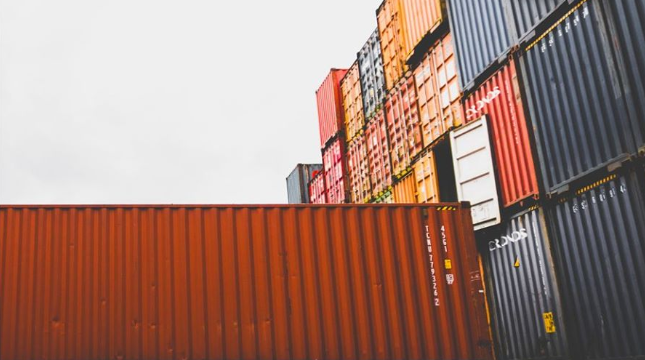
Sea freight skyrockets between China and Brazil
Jan, 07, 2021 Posted by Ruth HollardWeek 202101
Sea freight on the China-Brazil route has soared. The cost of imports was already on the rise in the last quarter and this week, it reached an unprecedented level of US$ 10,000 per TEU, according to importers and shipping companies. “It is a record high; I had never seen freight reach that amount,” said Luigi Ferrini, Senior Vice President of Hapag-Lloyd in Brazil. A year ago, the cost of this same route was in the range of US$ 2,000 per TEU.
According to Rafael Dantas, director of the importer Asia Shipping, the increase in freight costs has increased since October, with the global recovery of the economy and the greater demand for Chinese products.
The surge also occurs on other routes from China. The trips from Asia to Europe and the United States reached above-average values, with more than US$ 4000 per TEU.
The price increase is mainly the result of logistical problems and the large gap between supply and demand over the past year – a “perfect storm for global container flows”, according to Centronave, which represents the long-haul global shipping groups in Brazil.
“When the pandemic broke out, many companies stopped placing orders and there were dozens of travel cancellations [by cargo ships]. But demand for products did not fall as expected. Money that would have been spent on travel was now being spent on items for the home and home office. Local consumption increased worldwide, and there was a lack of products”, summarizes Ferrini.
At the height of the Brazilian pandemic, between March and July, 23 ship trips from China were canceled. The number is equivalent to at least five weeks without container imports from the country.
In the middle of the year, it became clear to companies that it would be necessary to resume orders. The increase, however, coincided with the resumption in Europe and the United States, leading to a fierce dispute over containers and vessels. Today, virtually all ships available in the world are in use, says Centronave.
See the chart below for the main origins of Brazilian imports
Brazilian Imports from China vs. Other origins | Jan 2019 to Nov 2020 | TEU
Source: DataLiner
The situation is aggravated because the pandemic has also reduced efficiency in releasing cargo at ports, terminals, and warehouses, which also suffered from social isolation measures and the reinforcement of health surveillance protocols.
To try to ease the bottleneck, between October and December, shipping companies added 14 extra-loaders (additional ships), which increased capacity by about 14% on the Shanghai-Santos route. The increase, however, has not been sufficient to meet demand. In the week of Christmas, freight registered US$ 7,184 per TEU. Seven days later, it had already reached US$ 8,173. Now, shipowners and importers say prices have reached the US$ 10,000 mark.
The graph below shows the trade imbalance of Brazilian imports and exports via container in the period from January to November 2020:
Trade Imbalance Brazil | Jan 2010 to Nov 2020 | TEU
Source: DataLiner (To request a DataLiner demo click here)
The increase could affect several sectors that depend on Chinese imports. This is the case, for example, in the electrical and electronic products industry (mainly portable and brown products). The largest companies in the sector, which work with annual contracts in maritime transport, reported readjustments of 90%, according to the National Association of Manufacturers of Electronic Products (Electros). The smaller ones, which make sporadic imports, reported a 200% increase in cost.
For Dantas, from Asia Shipping, another aggravating factor is the concentration on maritime transport, composed of large global groups. “After years of crisis, companies started to share operations, exchange information about the market. This consolidation undoubtedly contributes to higher prices”, he says.
Another expert points out that in other regions, such as in Europe, the surge in freight is already a competition defense issue.
Ferrini counters criticism and says that the concentration of the sector was only due to the failure of some companies, which were in a fragile situation after years of crisis and reduction in applied tariffs.
Centronave says that the surge in prices is the result of a combination of atypical factors resulting from the pandemic and pointed out that the capacity of companies to expand the offer, to reduce freight, is nil: the worldwide idleness of the fleet is 1.5% (against 10.6% a year ago). In addition, the association says that the price hike affects only the spot market (with immediate negotiation) and estimates that between 40% and 50% of imports from China to Brazil are governed by annual contracts, with more stable freight.
In the market, there is still a lot of uncertainty about how prices will behave in the medium-term. Centronave believes that freight will return to normal throughout 2021. For Ferrini, the prospect is that it will remain high for another two or three months. Asia Shipping projects that prices will drop from the current record, but remain above US$ 4,000 per TEU.
Source: Valor Econômico
-
Ports and Terminals
Dec, 11, 2024
0
Company Signs Contract with Porto de Pelotas for Expansion Project
-
DW 2019 EN
Jan, 23, 2019
0
DatamarWeek 23 January 2019
-
Grains
Dec, 28, 2021
0
A record-breaking grain harvest is expected for 2021/2022
-
Grains
Apr, 11, 2019
0
Brazil’s April soybean shipments could hit 4-year low



